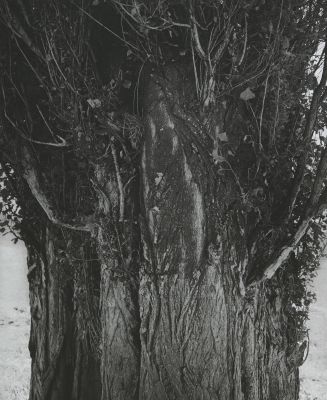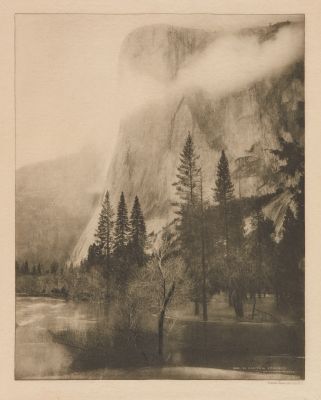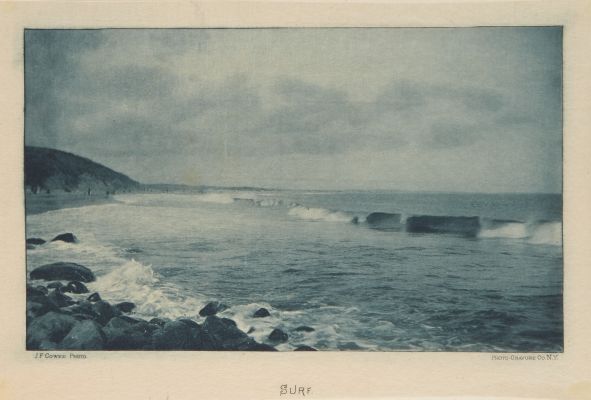
Title
Dawn and SunsetArtist
Robinson, Henry Peach (British, 1830-1901)Publication
Twelve Photographic StudiesDate
1889Process
PhotogravureAtelier
Scovill and Adams CompanyImage Size
16.5 x 22.7 cm
Henry Peach Robinson was a pioneer in the "combination printing" technique, employing a number of negatives to make one photographic print. Keenly interested in portraying picturesque narrative scenes and landscapes, he carefully staged elaborate tableaux, often relying on relatives to serve as models. In Dawn and Sunset he presented a symbolic portrayal of three generations, from infancy to old age. By using the combination method, he was able to exercise greater control over his subjects’ poses, gestures, and expressions than would have been possible with a single exposure. The smaller, platinum print version provides an instructive example of how an artist’s vision can change when a different process is used to print the same negative. The platinum process provided a warmer, more subtle tonal range than the albumen process. The larger, albumen print appears almost journalistic in its use of harsh, even lighting, whereas in the platinum print Robinson was able to hide many details in dark shadow. This created a sense of unity that is missing in the larger image.
(The Cleveland Museum of Art, 2022)
Reproduced / Exhibited
Gernsheim, Helmut. Creative Photography. Aesthetic Trends 1839-1960. [with Illustrations.]. London: Faber & Faber, 1962. p. 82
Nordström, Alison D, Thomas Padon, and J L. Ackerman. Truthbeauty: Pictorialism and the Photograph As Art, 1845-1945. Vancouver, B.C: Douglas & McIntyre, 2008. Print. p 36











